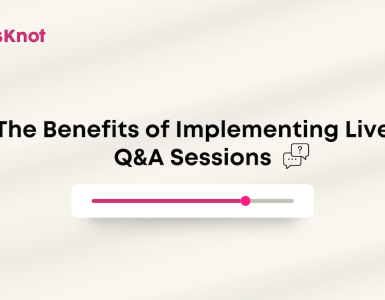Learning Management System (LMS) platforms have been the holy grail of education for the last decade. As a result of their increasing popularity, the costs of implementing them has skyrocketed with little to no justification for the increase. In today’s heuristic world, LMS platforms’ lack of innovation has gotten in the way of quality and affordable technology for educational institutions.
[taq] You have probably heard the phrase “nothing comes free in life,” and this saying applies when adopting a new technology or software tool.[/taq]
If the costs to implement an LMS continues to increase and the usability remains stagnant, why do we still need them?
Organizing content is challenging. Imagine having thousands of students with different curriculums and projects due in a semester. As a professor, this can be overwhelming without the proper tools. Organizing content efficiently is essential for the success of a course over time. Having all your files centrally located and accessible to students saves professors time and frustration. Overall, the critical problem the current e-Learning platforms are solving is the administration of a course. The platforms are instructor-centric rather than student-centric, yet only 56 percent of educators admit using their LMS for their classes.
If a new way to consume information arises, then naturally, an old way must diminish. Traditionally, textbooks and lectures dominated as the most popular means of distributing class material. However, with the change in behaviors owing to technological influences, students reportedly have shorter attention spans due to the distractions caused by smartphones. What this means for educators is that the effectiveness of traditional methods needs to be investigated.
Going back to “nothing comes free in life,” what kind of costs are we truly facing when implementing an LMS?
Average costs of implementing an LMS are perpetual licenses that range from $500-$20,000 and set up fees that can be over $25,000. In addition to these, cost-per-user or cost-per-course fees are added depending on LMS. You may ask, “what about the open-source, free platforms? *Hint, hint- They are not free.” Although we expect to pay implementation fees, most of these platforms are riddled with hidden fees such as customer service fees, maintenance fees, customization costs, etc.
Training fees are the highest hidden costs because training takes time and budget from institutions. Not only are institutions paying someone to train your staff, but also paying your staff to get trained. Training fees can range from $300 an hour to $12,000+ for an onsite visit. If these platforms were built with faculty and administrators in mind, why is it so difficult for them to navigate the platforms on their own?
- The rest of the hidden fees, such as customer service, maintenance fees, and customization, can all vary depending on the company. Altogether, these hidden fees can be avoided. Let’s go deeper into some of the other hidden fees:
- Customer Service fees: A platform built with the end-user in mind tends to be relatable. If it’s relatable, then the learning curve is minimal. If the learning curve is low, customer service will play a much smaller role.
- Maintenance fees: Keeping your platform up to date is necessary. It enhances the user experience when navigating the platform. Maintenance costs can be $10,000+ a year on the low end, depending on the institution’s size. These costs are the result of how a website is built and the number of features it has. Let’s break it down- If an LMS has too many features, then the maintenance costs will continue to increase. It may sound like a good thing to have an “all-in-one LMS,” but a recent study revealed that 19 percent of the features are never used, and 45 percent of them are rarely used. Building simple platforms with useful features that solve specific aspects of student engagement can help avoid high maintenance fees.
- Customization fees: Having an all-in-one LMS can only increase maintenance fees and customization fees. Decision-makers can have a vast selection of features to pick from, but not all of them apply to their institution’s needs. Do we really need all these features? The answer is no. According to the 80/20 rule, “You need 20 percent of features, and 80 percent of your LMS gets in the way.”
Fostering spaces where active learning can occur should be the priority of LMS companies. As of 2018, we are at the lowest annual growth by far for state fiscal funding in the last five years. This is not new to the educators, decision-makers, students, and parents who only see the increase in tuition fees every year. E-Learning platforms are more interested in closing deals and absorbing money from the institution than solving problems with quality products that enhance the learning experience and help reduce education fees.
These costly mistakes have pushed many educators and decision-makers to find more economical solutions to the engagement problem to rid themselves of the burden of spending large chunks of their budget on inadequate “management systems.” Many educators have turned to social media and social-learning platforms to solve engagement problems without the need to sign contracts or spend thousands of precious dollars.
The end of costly and unrelatable management systems is on the horizon. Quality and inexpensive technologies are slowly replacing the “management” portions of LMS and enhancing the end-user’s learning process.






1,175 comments